I didn’t get much work on this project this week. We had our broadcast and I did some work finishing up the other side of the Guntank’s tracks, but more on that later. Starting off with the heat hawk, the thing is massive, so I figured I’d light up the damn thing. The first step is to glue to two halves of the hawk’s blade together and fill in the gap on one side of the blade. I just used Mr white putty and filled in the area. Once cured, the excess is sanded as well as the seams and I’m left with the below.
See how I got from the first picture to the second after the jump!
With the blade completely sealed and filled, I can start the next process, making a mold. It is important to make the blade completely water tight. The silicone mold material is a thick liquid when first mixed, and in a pressure pot with 40 psi, this liquid can squeeze into some pretty tight places. I’ve tried to cast some parts that were not completely glued together and I got a bunch of silicon in the internals and a bunch of unwanted air bubbles. So when making a mold of a two piece part, make sure you completely seal it up. I use some legos to create a box. The test fit the parts inside the box. I’m also making a copy of the Zaku’s head snout piece as I lost one. With the lego box created, I filled the bottom of the box with playdough (not pictured). This as as an anchor for the parts so they don’t go floating up when I pour the silicone. It also helps as a temporary “other half” to the 2 part mold I make. The second picture below is taken after the first silicone mold part has cured – about 6 hours or so. You can see the residual playdough that I just clean off using warm water and an old toothbrush. DO NOT USE YOUR WIFE/GIRLFRIEND/BOYFRIEND’s current toothbrush for this; unless you’re into that kind of practical joking…
Once cleaned off and completely dry; the lego box is built back around the mold halves. Silicone sticks VERY well to itself. So to keep it from sticking, grab some vaseline and an old brush and apply it to one half of the mold and anywhere there are holes. The stuff is a fantastic lubricant, horrible when used in conjunction with condoms as the stuff will break it down… the more you know…The thing to take from this is to just not use condoms… After applying the vaseline, the mold is ready for the second silicone pour.
6 hours later, I remove the original part and prep the mold for first use. I spray it down with some mold release then bake the mold in a low temperature oven (80-100 degrees F) for about 10 – 15 minutes. The mold should be nice and warm. This activates the mold release. While this is happening, the original part is used to help string together some LEDs. For this first casting, I used some 1.8mm orange LEDs. They’re wired in parallel. Meaning all the negatives are wired together, and all the positives are wired together. The in the middle, I have one positive and one negative coming out. The lights are tested and they’re ready for the next step.
I cut some slits along the back of the mold starting from the axe’s tab piece. This will help hold the wires in place as well as the entire assembly while the resin cures. I used a clear two part epoxy resin. The wire assembly is placed inside the mold and carefully positioned. Then the epoxy resin is mixed and poured into the mold. The entire mold assembly is placed into a pressure pot at 40 psi to help reduce bubbles forming.
The clear resin takes a little longer than the regular white resin I use, so the entire assembly is left alone for at least a full day. Removing the assembly from the mold, I have the following. A clear resin copy of the axe with embedded LEDs.
A quick assembly with the rest of the axe parts and connecting a battery, the assembly looks like the following lit up. Not too bad for the first casting. I will definitely make another cast of this using some white LEDs and see how much I like that. But this is a good start.
Back to the Guntank ET, I got the other half of the tracks cut apart and assembled the MG Guntank’s treads. This is a definitely improvement, there’s natural sag and I can have the ET sit over road debris and it’ll look fairly natural.
I did a post last week of just one photo collage. Below is the process for building the replacement Zaku cables. Just a solid wire, wrapped with magnet wires, and metal collar pieces.
The final look is fairly distinguishable. The little mods for these two kits are coming along. I have some more little details to add; but I really wanted to get this written up for the Heat Hawk axe work.
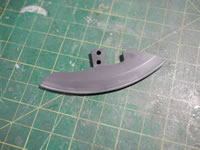
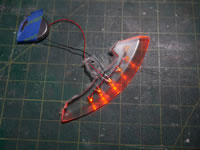
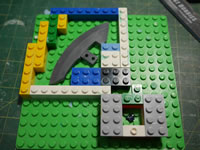

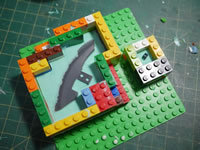
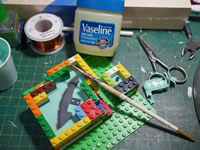
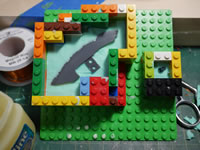
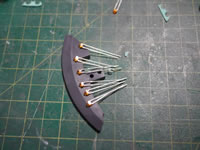
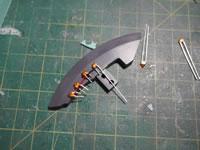
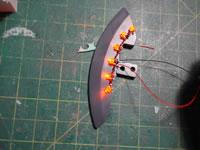


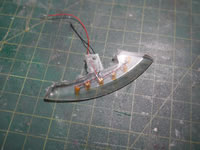
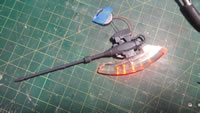
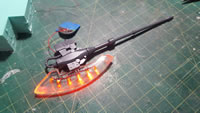
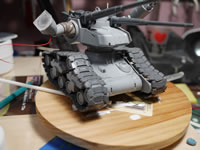
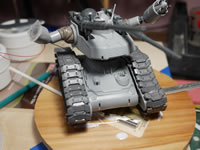
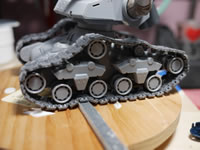
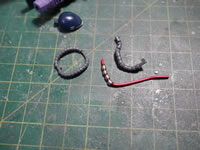

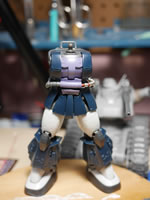
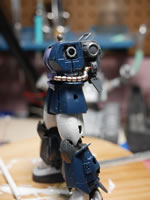
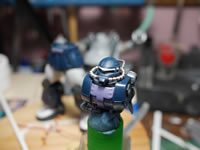
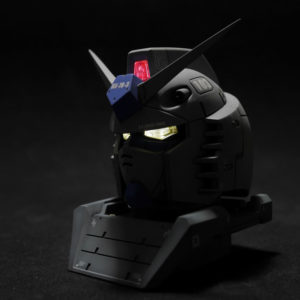
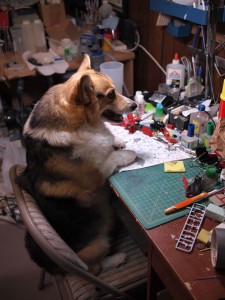
owesomenesss
I love the clear casting concept with leds. very cool.